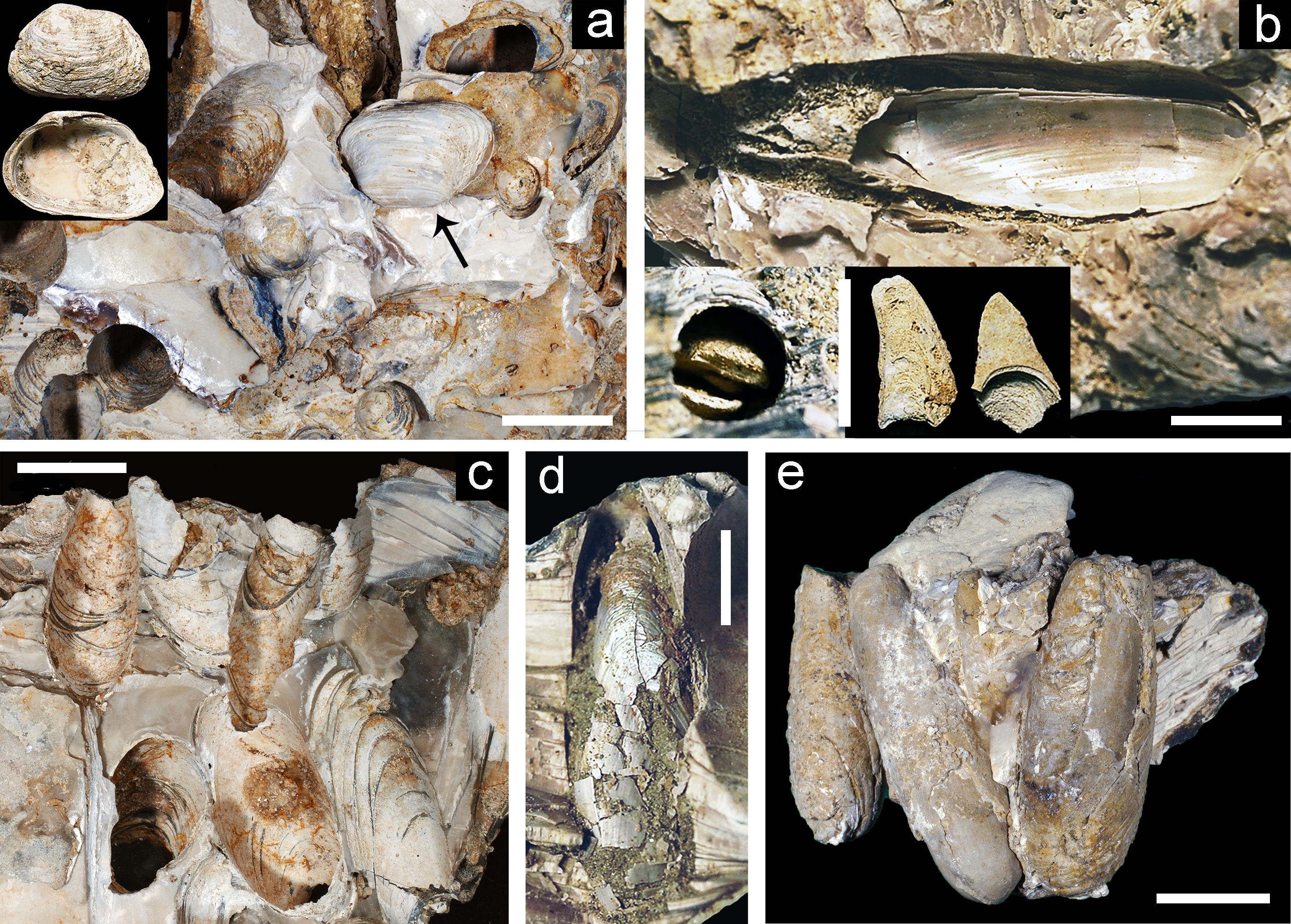PALAEONTOLOGY OF THE UPPER PLIOCENE MARINE DEPOSITS OF RIO VACCARUZZA, VILLALVERNIA (PIEDMONT, NW ITALY)
DOI:
https://doi.org/10.54103/2039-4942/15178Keywords:
taphonomy, papaeoecology, palaeobiocenosis, Posidonia meadows, brachiopod population analysis, mollusc taxonomy, Gastrochaenolithes, otholitsAbstract
Abstract. The topmost Argille Azzurre (beds 1-2) and the basal Sabbie di Asti (beds 3-9) formations in the Villalvernia area are analysed in terms of palaeoecological and taxonomic features; the succession is 6 m thick and dates back to the middle Piacenzian within the Globorotalia bononiensis acme. The upper boundary of the clayey Bed 2 corresponds to an unconformity reflecting Pliocene tectonic activity. The study is focused on the fossil assemblages of beds 3, 4 and 9. The sandy Bed 3 yields 362 mollusc taxa; their assemblage is allochthonous and mixes infra- to circalittoral species accumulated by hyperpycnal mass-transport. The same mechanism is responsible for the origin of the overlying fossil unit (Bed 4) with numerous specimens of the Entobia-Gastrochaenolites ichnofacies. The autochthonous fossil assemblage of Bed 9 yields 308 molluscs, plus three brachiopods and ten fish taxa; most of them refer to the Posidonia meadow (HP), and their autochthony is shown by taphonomic features as skeletal integrity, mixing of successive generations or the limitation to juvenile ontogenetic stages of vagile and temporarily byssate species for which the HP performs a nursery function. Three brachiopods and 52 molluscs are here reported for the first time from the Pliocene of Piedmont. In the final chapter “Systematic Palaeontology” four brachiopods and 29 molluscs are described, among which there are eight new gastropod species: Crepidula bellardii n. sp., Conus dellabellai n. sp., Conus villalvernensis n. sp., Odetta chirlii n. sp., Ondina curta n. sp., Ondina elongata n. sp., Ondina pseudovitrea n. sp., Anisocycla subcylindrica n. sp.
Metrics

Downloads
Published
Issue
Section
License
Copyright (c) 2022 GIULIO PAVIA, ALFRÉD DULAI, ANDREA FESTA, ROCCO GENNARI, MARCO PAVIA, GIORGIO CARNEVALE

This work is licensed under a Creative Commons Attribution-NonCommercial-NoDerivatives 4.0 International License.
The journal allow the author(s) to hold the copyright without restrictions.
Accepted 2021-09-16
Published 2022-02-15






